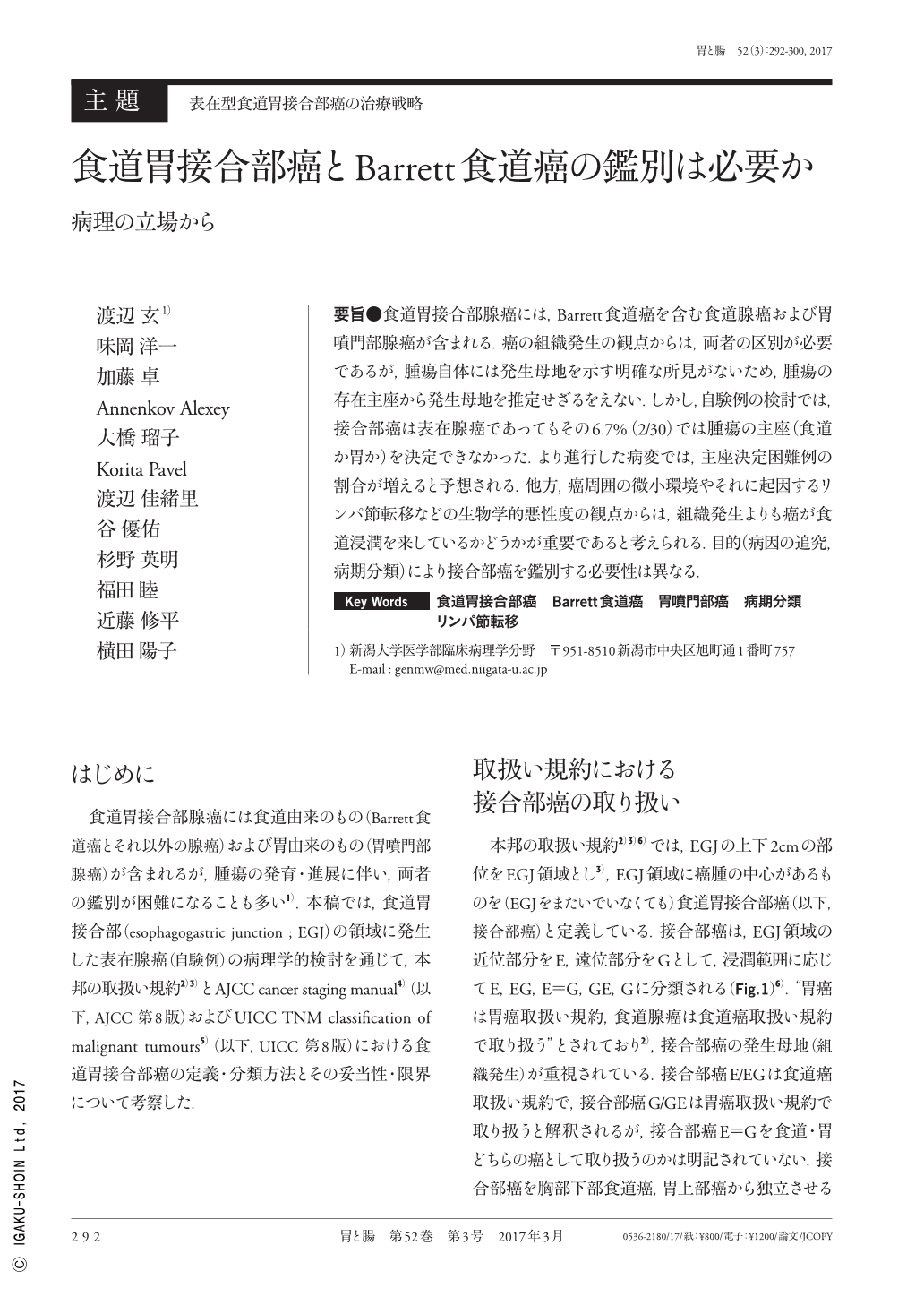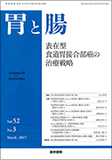Japanese
English
- 有料閲覧
- Abstract 文献概要
- 1ページ目 Look Inside
- 参考文献 Reference
- サイト内被引用 Cited by
要旨●食道胃接合部腺癌には,Barrett食道癌を含む食道腺癌および胃噴門部腺癌が含まれる.癌の組織発生の観点からは,両者の区別が必要であるが,腫瘍自体には発生母地を示す明確な所見がないため,腫瘍の存在主座から発生母地を推定せざるをえない.しかし,自験例の検討では,接合部癌は表在腺癌であってもその6.7%(2/30)では腫瘍の主座(食道か胃か)を決定できなかった.より進行した病変では,主座決定困難例の割合が増えると予想される.他方,癌周囲の微小環境やそれに起因するリンパ節転移などの生物学的悪性度の観点からは,組織発生よりも癌が食道浸潤を来しているかどうかが重要であると考えられる.目的(病因の追究,病期分類)により接合部癌を鑑別する必要性は異なる.
Adenocarcinoma of esophagogastric junction consists of esophageal(including Barrett's)adenocarcinoma and gastric cardia adenocarcinoma. It is crucial to distinguish between the esophageal and gastric cardia adenocarcinomas from a histogenetic perspective. We have to assume the origin of the tumor based on the tumor location, as the tumor itself has no reliable findings indicating the origin of the tumor. In this study, 6.7%(2/30)of superficial adenocarcinomas of the esophagogastric junction could not be classified into esophageal or gastric adenocarcinoma, so it is expected that the percentage of unclassified cases will increase with more advanced lesions. On the other hand, from the biological perspective on cancer microenvironment and lymph node metastasis, it is important to determine whether the cancer invades the esophagus rather than focusing on histogenesis. The essential point of classifying the junctional carcinoma is different depending on the investigating destination.

Copyright © 2017, Igaku-Shoin Ltd. All rights reserved.


